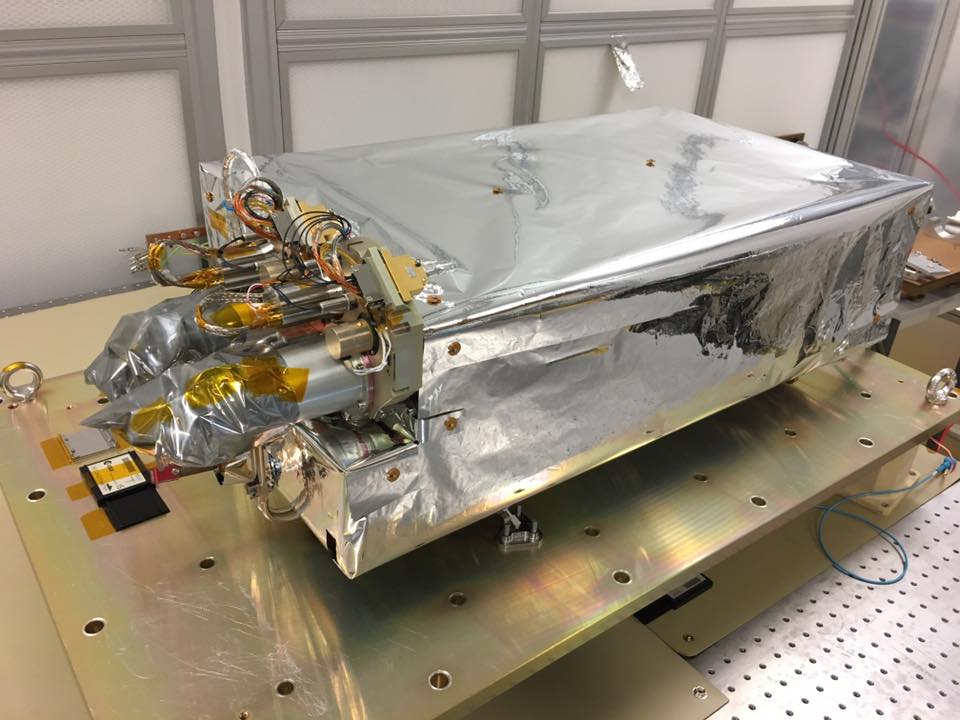Extreme Ultraviolet Imager (EUI) ready for launch!
This is it: the solar telescope EUI is ready to be mounted on the Solar Orbiter satellite. Solar Orbiter will be launched in 2019 and will approach the Sun closer than any other satellite ever. Because of its close approach, EUI will be able to make exceptionally detailed images of our star. These will enable scientists to unlock the secrets of the solar atmosphere: why is it so hot, what’s the nature of those magnetic loops and what puts them into motion? EUI will also be the first to image the Sun’s polar regions which are barely visible from Earth.
The EUI telescope was developed by the Centre Spatial de Liège (CSL) and the Royal Observatory of Belgium (ROB), in collaboration with the Belgian industry and foreign partners. Solar Orbiter is a scientific mission led by the European Space Agency (ESA), but also its American counterpart NASA is heavily involved.
EUI is a scientific camera which will make high-resolution images of the solar atmosphere in non-visible light, i.e. in extreme ultraviolet. The Earth’s atmosphere blocks that light and so it can only be studied from space. The Sun has a completely different outlook in EUV: through magnetic loops, the solar mass is suspended far above the solar surface. These magnetic loops are very dynamic and can suddenly brighten and even burst. If these eruptions are directed towards Earth, they can have severe consequences on our technology such as GPS and radio communication, power grids, and pipelines. EUI offers scientists a unique opportunity to have a close look at the dynamic processes in the solar atmosphere.
The construction of EUI started already 10 years ago. We have now entered the final phase: the delivery of the instrument to ESA and its integration into the satellite currently under construction. Once EUI and all the other instruments have been assembled, Solar Orbiter will be launched. The satellite then has a long journey ahead before it will reach the right orbit close to the Sun. So it will only be a few years after launch that we can expect the first images and scientists can get to work. We are already looking forward to it!
Contact ROB
| David Berghmans – NL, EN Principal Investigator after launch M : 0486 24 49 80 Royal Observatory of Belgium Ringlaan 3 – B1180 Brussel David.Berghmans@oma.be |
Petra Vanlommel – NL, EN Science communication M : 0474 59 22 23 Solar-Terrestrial Centre of Excellence Ringlaan 3 – B1180 Brussel Petra.Vanlommel@oma.be |
Contact CSL
| Pierre Rochus – FR, EN Principal Investigator before launch M : 0477 37 23 88 T : 04 382-4607 Centre Spatial de Liège Avenue Pré-Aily – B29 Liège Science Park 4031 Angleur prochus@ulg.ac.be |
Michael Ghilissen – FR, EN Communications Manager M : 0476 24 23 10 T : 04 382-4600 Centre Spatial de Liège Avenue Pré-Aily – B29 Liège Science Park 4031 Angleur michael.ghilissen@ulg.ac.be |


